Embedded C programming – Best Career Opportunities In Embedded Systems
Embedded C online course – Vocation Open doors in Implanted Frameworks
The field of implanted frameworks has been consistently developing, driven by progressions in innovation and the rising combination of savvy gadgets into our regular routines. From auto advancements to IoT (Web of Things) gadgets, inserted frameworks act as the foundation of present day innovation. In this article, we will investigate the different and promising profession open doors in implanted frameworks and why this field is a phenomenal decision for hopeful designers and innovation fans.
What Are Installed Frameworks?
Implanted frameworks are specific registering frameworks that carry out devoted roles inside bigger frameworks. Dissimilar to universally useful PCs, implanted frameworks are intended for explicit undertakings, guaranteeing effectiveness, dependability, and ongoing execution. They are necessary parts in different gadgets, including cell phones, clinical gear, home devices, vehicles, and modern apparatus.
Learn Embedded C Programming with Expert-Led Courses

Embedded C -Why Pick a Lifelong in Implanted Frameworks?
Implanted frameworks offer a dynamic and remunerating vocation way because of multiple factors:
Popularity: The developing dependence on shrewd and associated gadgets guarantees a reliable interest for talented experts.
Advancement: This field includes dealing with state of the art advances, giving open doors to inventiveness and development.
Different Applications: Implanted frameworks experts can work in different businesses, from medical care and auto to buyer gadgets and media communications.
Appealing Pay rates: Cutthroat remuneration bundles are normal, mirroring the worth of ability in this space.
Center Abilities Expected for Inserted Frameworks Professions
To succeed in the field of implanted frameworks, certain abilities are fundamental:
- Programming Capability
Dialects: Capability in dialects like C, C++, Python, and Get together is essential for creating and troubleshooting implanted frameworks.
Ongoing Frameworks: Information on continuous working frameworks (RTOS) like FreeRTOS or VxWorks is significant. - Equipment Information
Microcontrollers and Microchips: Understanding the engineering and usefulness of these parts is major.
Circuit Plan: Abilities in PCB configuration, testing, and troubleshooting are significant. - Logical and Critical thinking Abilities
Engineers should investigate issues, upgrade execution, and guarantee framework unwavering quality. - Knowledge of Apparatuses
Capability in apparatuses like Keil, MPLAB, and Arduino IDE is beneficial. - Space Explicit Information
Contingent upon the business, extra aptitude in regions like IoT conventions, car correspondence (CAN, LIN), or clinical gadget guidelines might be required.
Famous Vocation Ways in Implanted Frameworks
The field of installed frameworks offers assorted vocation open doors, taking care of various ranges of abilities and interests. - Implanted Computer programmer
An implanted computer programmer creates and keeps up with the product running on installed frameworks. Key liabilities include:
Composing and testing firmware.
Troubleshooting and streamlining framework execution.
Guaranteeing programming consistence with industry norms.
- Installed Equipment Designer
This job centers around planning and fostering the equipment for installed frameworks. Obligations include:
Planning circuit sheets and choosing parts.
Incorporating equipment with programming.
Leading framework testing and approval.
- Framework Planner
Framework planners plan the general structure of implanted frameworks, guaranteeing that equipment and programming parts coordinate flawlessly. This senior-level job requires broad experience. - IoT Designer
As the Web of Things (IoT) develops, there is expanding interest for experts who can foster implanted frameworks for IoT gadgets. Errands include:
Planning correspondence conventions.
Guaranteeing gadget security.
Executing cloud availability.
- Firmware Designer
Firmware engineers represent considerable authority in the low-level programming that spans equipment and programming. They assume a basic part in upgrading framework execution. - Quality Confirmation Designer
Quality confirmation (QA) engineers test installed frameworks to guarantee they fulfill execution and dependability guidelines. This job includes:
Running experiments.
Distinguishing and settling bugs.
Guaranteeing consistence with industry guidelines.
- Auto Inserted Specialist
The auto area depends vigorously on implanted frameworks for highlights like high level driver-help frameworks (ADAS), infotainment, and motor control. Engineers in this field work on:
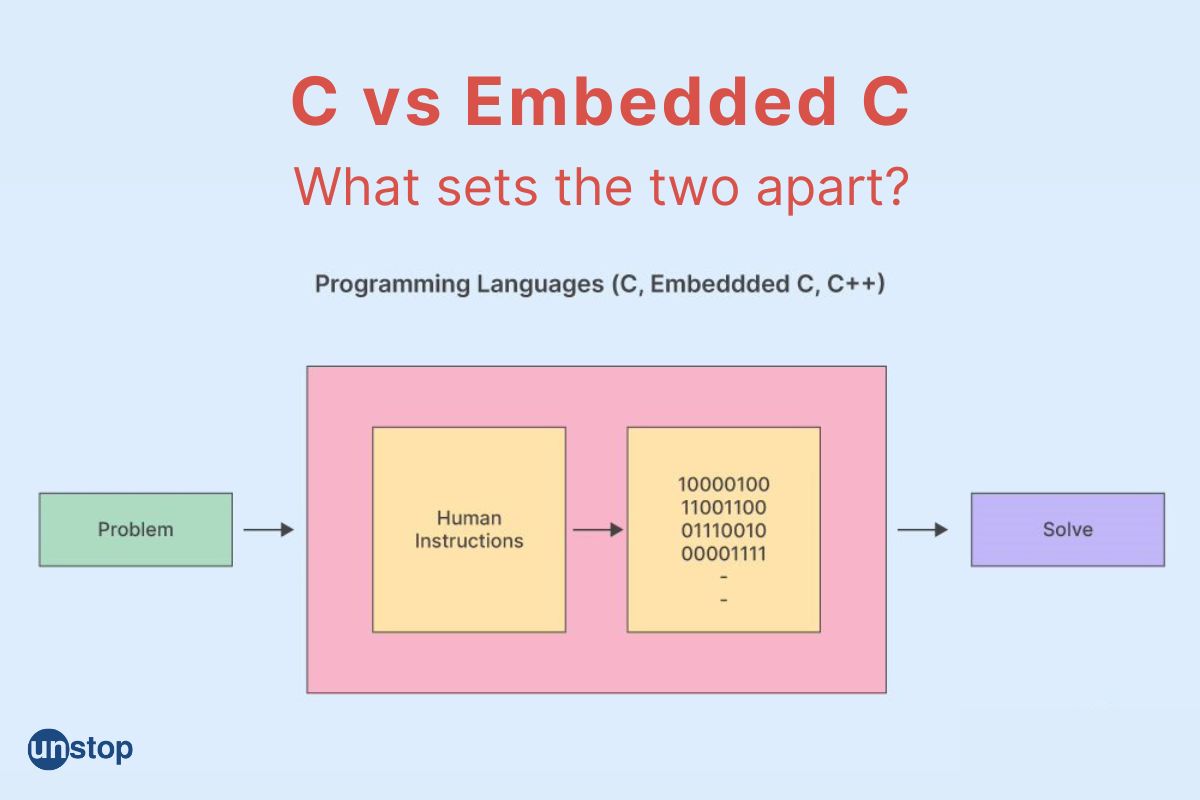
Best embedded C Hardware design course
Embedded C- Planning ECU (Electronic Control Units).
Executing security conventions.
Guaranteeing consistence with auto norms like ISO 26262.
Arising Patterns in Implanted Frameworks Professions
Implanted frameworks keep on developing, setting out new profession open doors in creative regions:
- Man-made reasoning (man-made intelligence) in Implanted Frameworks
Man-made intelligence controlled implanted frameworks are reforming businesses, from mechanical technology to medical services.
Engineers talented in artificial intelligence and AI can investigate energizing open doors here. - Edge Figuring
Edge figuring, which processes information locally as opposed to in unified servers, depends vigorously on implanted frameworks. This pattern is driving interest for experts who can improve edge gadgets. - Network safety
As implanted frameworks become more associated, it is fundamental to guarantee their security. Online protection specialists with inserted frameworks information are profoundly pursued. - Low-Power Plan
The requirement for energy-productive gadgets has prompted an emphasis on low-power implanted frameworks, setting out open doors for engineers gifted in power enhancement.
Businesses Employing Implanted Frameworks Experts
Inserted frameworks are basic to various ventures, offering experts an extensive variety of profession valuable open doors: - Auto
From independent vehicles to savvy infotainment frameworks, implanted frameworks drive development in the auto area. - Medical services
Clinical gadgets like pacemakers, imaging hardware, and patient observing frameworks depend on inserted innovation. - Purchaser Gadgets
Cell phones, wearables, and home mechanization gadgets are controlled by installed frameworks. - Modern Robotization
Implanted frameworks assume a critical part in mechanical technology, assembling, and production network the board. - Aviation and Safeguard
Rockets, satellites, and high level flying frameworks rely upon inserted frameworks for accuracy and unwavering quality.
Instructive Pathways to a Lifelong in Implanted Frameworks
To seek after a vocation in implanted frameworks, a solid groundwork in designing and software engineering is fundamental. Here are a few instructive pathways:
- Four year certification
Fields: Hardware and Correspondence Designing, Software engineering, Electrical Designing, or related disciplines.
Abilities: Fundamental programming, microcontroller programming, and computerized rationale. - Graduate degree
Specializations: Implanted Frameworks, Advanced mechanics, IoT, or VLSI Plan.
Center: High level points like RTOS, equipment programming co-plan, and sign handling. - Certificates
Certificates in implanted frameworks, IoT, or related apparatuses (e.g., Arduino, ARM Cortex) can upgrade work possibilities.
Future Extent of Inserted Frameworks Professions
The interest for inserted frameworks experts is set to develop as innovation keeps on progressing. Key drivers of development include:
IoT Development: The multiplication of IoT gadgets is setting out interminable open doors.
Brilliant Urban communities: Installed frameworks are urgent for the foundation of shrewd urban areas, from traffic the executives to energy improvement.
5G Innovation: The rollout of 5G organizations is driving advancements in implanted frameworks for constant correspondence
What Are Device Drivers?

Embedded C device drivers are a vital part of current PC frameworks, guaranteeing that equipment gadgets capability flawlessly with the working framework and applications. They go about as delegates, interpreting the significant level orders of programming into low-level guidelines that equipment gadgets can comprehend and execute. Without gadget drivers, equipment parts like printers, consoles, and realistic cards would not be able to discuss successfully with a PC’s working framework.
Grasping Device Drivers
A DEvice driver is a particular programming program that permits a working framework to interact with a particular equipment gadget. Every equipment part in a PC framework requires a comparing gadget driver to accurately work. For instance, a printer requires a printer driver, while a designs card requires an illustrations driver.
The essential capability of gadget drivers is to oversee and control the association between the equipment and programming. They give a layer of deliberation, empowering the working framework and applications to give orders without expecting to grasp the particulars of the equipment.
Sorts of Gadget Drivers
- Piece Mode Drivers
Piece mode drivers work at the center level of the working framework. They have direct admittance to equipment assets and can perform basic errands. Models include:
Designs Drivers: For delivering visuals on the screen.
Network Drivers: For overseeing network correspondence.
- Client Mode Drivers
Client mode drivers run at the application level, giving a more secure and more steady climate since they don’t have direct admittance to the framework’s portion. Models include:
Printer Drivers: To work with correspondence between the working framework and printers.
USB Drivers: To oversee USB gadgets like blaze drives or outside hard circles.
- Virtual Gadget Drivers (VxDs)
Virtual gadget drivers copy equipment gadgets, permitting programming applications to cooperate with virtual equipment. They are normally utilized in virtualization conditions.
How Gadget Drivers Work
Gadget drivers capability as an extension among equipment and programming. This is the way they work:
Introduction: When a gadget is associated with a framework, the working framework recognizes it and burdens the comparing driver.
Correspondence: The driver deciphers orders from the working framework into directions the gadget can execute.
Control: It oversees information move, screens gadget execution, and handles blunders or breakdowns.
Key Elements of Gadget Drivers
- Reflection
Gadget drivers unique the intricacies of equipment, permitting programming designers to make applications without requiring point by point information on the basic equipment. - Asset The executives
Drivers dispense and oversee framework assets like memory, intrudes, and I/O ports for gadgets. - Mistake Taking care of
They identify and determine issues that happen during equipment activity, guaranteeing smooth framework execution. - Synchronization
Drivers coordinate the association between different gadgets, forestalling asset clashes and guaranteeing effective activity.
Instances of Gadget Drivers
- Show Drivers
Show drivers, like those for GPUs (Designs Handling Units), empower the delivering of pictures, recordings, and movements on screens. - Sound Drivers
These drivers deal with the information and result of sound gadgets, including amplifiers, speakers, and sound cards. - Capacity Drivers
Capacity drivers work with correspondence with capacity gadgets like hard drives, SSDs, and optical drives. - Network Drivers
Network drivers guarantee network between a PC and an organization, supporting information trade across neighborhood and wide-region organizations.
Normal Difficulties with Gadget Drivers
- Similarity Issues
Drivers should be viable with both the equipment and the working framework. Incongruence can prompt gadget breakdowns or framework crashes. - Obsolete Drivers
Obsolete drivers may not help the most recent equipment includes or working framework refreshes, affecting execution and usefulness. - Security Weaknesses
Drivers work at a low level inside the framework, making them an expected objective for noxious assaults while possibly not appropriately gotten.
The Significance of Keeping Drivers Refreshed
Routinely refreshing gadget drivers is fundamental to keep up with framework strength, security, and execution. Refreshed drivers:
Fix bugs and security weaknesses.
Improve similarity with new programming and equipment.
Further develop gadget execution and usefulness.
Instructions to Introduce and Refresh Gadget Drivers
- Programmed Updates
Most working frameworks give programmed updates to gadget drivers through framework refreshes. For instance:
Embedded C Windows Update in Microsoft Windows.
Programming Updater in macOS.
- Manual Establishment
Drivers can likewise be physically introduced by downloading them from the maker’s site. This technique is in many cases fundamental for particular equipment or more established gadgets. - Outsider Apparatuses
A few outsider applications are accessible to work on driver the executives, giving programmed updates and establishment to a large number of gadgets.
Embedded C Device Drivers and Present day Innovation
Device drivers are fundamental to the activity of trend setting innovations, including:
- Web of Things (IoT)
IoT gadgets depend on particular drivers to interface with sensors, actuators, and cloud-based frameworks. - Augmented Reality (VR)
VR frameworks require elite execution drivers for designs, sound, and movement GPS beacons to convey a vivid encounter. - Independent Vehicles
In independent vehicles, gadget drivers oversee sensors, cameras, and route frameworks, guaranteeing protected and productive activity.
Best Practices for Overseeing Gadget Drivers
- Utilize Official Drivers
Continuously use drivers given by the equipment maker to guarantee similarity and security. - Customary Updates
Plan occasional updates to guarantee your drivers support the most recent elements and fixes. - Reinforcement Drivers
Prior to refreshing or putting in new drivers, make reinforcements to reestablish the past design in the event of issues. - Screen Execution
Screen gadget execution subsequent to introducing or refreshing drivers to guarantee dependability and usefulness.
Embedded C device driver programming course
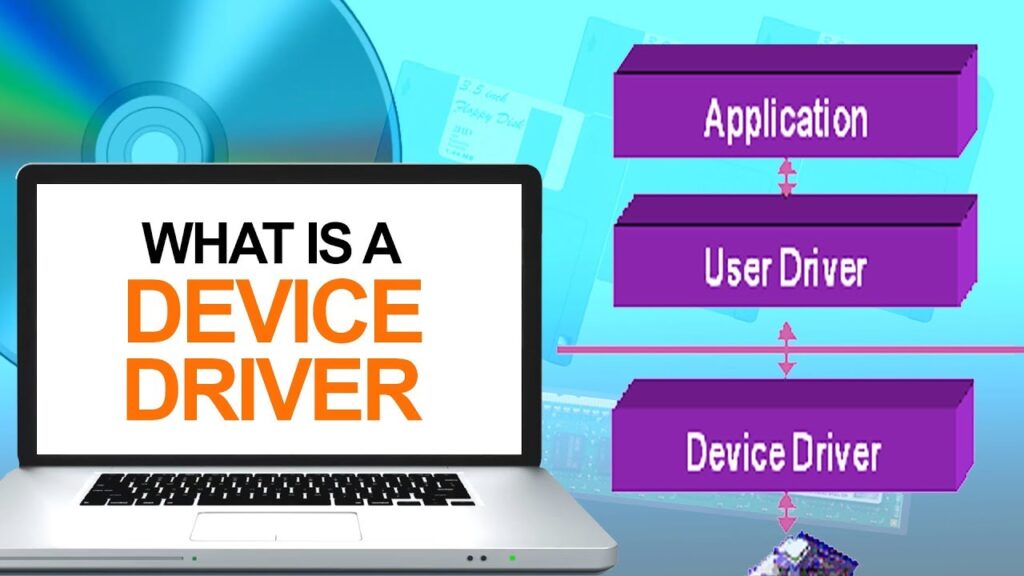
- Embedded C Device drivers are the overlooked yet truly great individuals of current processing, empowering consistent cooperation among equipment and programming. By overseeing basic errands like correspondence, asset allotment, and blunder dealing with, they guarantee the productive working of PC frameworks. As innovation keeps on advancing, the job of gadget drivers will stay fundamental, supporting developments in fields like IoT, VR, and independent frameworks.A particular piece of equipment could be constrained by a piece of programming (a gadget driver), or could be constrained by one more equipment gadget, which thusly could be overseen by a product device driver.
- In the last option case, such a controlling gadget is normally called a gadget regulator.
- So, a gadget driver has two sections: I) Gadget explicit and ii) operating system explicit.
- The device explicit part of a gadget driver stays same across every working framework, and Embedded C is a greater amount of understanding and unraveling of the gadget information sheets, than of programming.
In Linux, a device driver gives a framework call connection point to the client. Furthermore, this is the limit line between the supposed bit space and client space of Linux. In view of the operating system explicit connection point of a driver, in Linux a driver is extensively grouped into 3 verticals:
1.Packet-situated or Organization vertical.
2.Block-situated or Capacity vertical.
3.Byte-situated or Character vertical.
Embedded C & Python – Python Automation? Why It Is Important in Embedded Systems

Python has acquired gigantic fame as a flexible and productive programming language utilized across different spaces, from web improvement to information science. Its effortlessness and broad libraries have made it a go-to language for computerization and a fundamental apparatus in implanted frameworks improvement. In this article, we dig into what Python is, the way Python robotization works, and why it is basic in the realm of implanted frameworks.
What is Python?
A Significant Level, Flexible Programming Language
Python is a significant level, deciphered programming language made by Guido van Rossum in 1991. Known for its straightforwardness and comprehensibility, Python underscores code clearness, making it available even to novices. Its punctuation is intended to be instinctive, lessening the expectation to learn and adapt for engineers.
Highlights of Python
Simple to Learn: Python’s sentence structure emulates normal language, making it one of the least demanding programming dialects to learn.
Cross-Stage Similarity: Python works consistently on different working frameworks, including Windows, Linux, and macOS.
Broad Libraries: Libraries like NumPy, pandas, and TensorFlow take care of different necessities, from logical figuring to computerized reasoning.
Dynamic Composing: Python handles variable sorts at runtime, offering more noteworthy adaptability during improvement.Embedded C
Uses of Python
Python tracks down applications in:
Web advancement (e.g., Django, Flagon)
Information science and investigation
AI and computerized reasoning
Game turn of events
Installed frameworks and equipment association
What is Python Robotization?
Grasping Python Computerization
Python computerization alludes to the utilization of Python contents to consequently perform monotonous assignments. By utilizing Python’s powerful libraries and structures, designers can save time, lessen mistakes, and smooth out work processes.
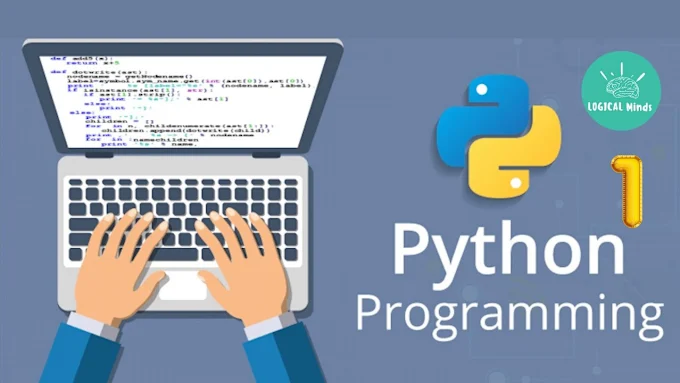
Key Use Instances of Python Computerization
Task Booking: Robotizing routine errands like reinforcements, information extraction, and record association.
Web Scratching: Gathering information from sites utilizing libraries like Wonderful Soup and Scrapy.
Test Mechanization: Robotizing programming testing to guarantee quality and dependability.
Gadget Control: Overseeing and controlling equipment gadgets in implanted frameworks.
Benefits of Python Computerization
Productivity: Mechanizes dull errands, saving time for more intricate work.
Practical: Lessens physical work and related costs.
Versatile: Adjusts effectively to assignments of changing intricacy.
Why Python is Significant in Implanted Frameworks
Prologue to Implanted Frameworks
Implanted frameworks are particular processing frameworks intended to perform explicit errands inside a bigger gadget. Models remember microcontrollers for home apparatuses, sensors in IoT gadgets, and control frameworks in vehicles.
Key Reasons Python is Urgent for Installed Frameworks
- Improved on Equipment Cooperation
Python, with libraries like pySerial and RPi.GPIO, makes it simpler to connect with equipment parts like sensors, actuators, and microcontrollers. This capacity is particularly valuable in prototyping and advancement stages. - Cross-Stage Backing
Python’s similarity across various working frameworks guarantees consistent turn of events and sending of inserted applications. - Quicker Improvement Cycles
Python’s clear grammar and broad libraries empower quick turn of events and testing of implanted frameworks applications, lessening time-to-showcase. - Ideal for IoT Applications
With the ascent of the Web of Things (IoT), Python has turned into a favored language for creating IoT Embedded Carrangements. Libraries like MQTT and Cup work with correspondence among gadgets and cloud stages. - Flexibility in Robotization
Python’s robotization abilities permit engineers to mechanize testing, arrangement, and framework observing in implanted conditions, guaranteeing unwavering quality and proficiency.
Python Libraries for Implanted Frameworks
- MicroPython
MicroPython is a lean execution of Python upgraded for microcontrollers and implanted frameworks. It upholds equipment level activities while holding Python’s straightforwardness. - CircuitPython
Created by Adafruit, CircuitPython is one more lightweight rendition of Python custom-made for implanted frameworks, making it simpler to program microcontrollers. - PySerial
PySerial empowers correspondence among Python and sequential gadgets like sensors and modems, making it fundamental for equipment connecting. - GPIO Libraries
Libraries like RPi.GPIO and gpiozero permit designers to control GPIO pins on Raspberry Pi sheets, significant for building installed applications.
Utilizations of Python in Implanted Frameworks
- Advanced mechanics
Python is generally utilized in mechanical technology for undertakings, for example, movement control, sensor information handling, and AI reconciliation. - Car Frameworks
In car frameworks, Python works with the advancement of control frameworks for highlights like versatile journey control, path keeping help, and infotainment. - Modern Computerization
Python-fueled installed frameworks drive modern mechanization processes, enhancing proficiency and lessening human mediation. - Shopper Gadgets
Implanted frameworks in gadgets like savvy televisions, home robotization frameworks, and wearables influence Python for upgraded usefulness.
Difficulties of Involving Python in Implanted Frameworks
- Execution Restrictions
Python’s deciphered nature can bring about more slow execution contrasted with arranged dialects like C. In any case, this can be moderated by utilizing upgraded Python libraries or mixture draws near. - Memory Imperatives
Installed frameworks with restricted memory might battle to oblige Python’s runtime climate. Lightweight renditions like MicroPython address this test. - Reliance The executives
Overseeing conditions and libraries in implanted conditions can be complicated, requiring cautious preparation and testing.
Best Practices for Python in Implanted Frameworks
- Utilize Lightweight Renditions
Pick MicroPython or CircuitPython to beat memory and execution limitations. - Enhance Code
Limit asset use by composing productive and compact Python code. - Test Widely
Direct careful testing to guarantee the unwavering quality and solidness of Python applications in implanted frameworks. - Screen Asset Use
Monitor computer processor and memory usage to guarantee the framework works inside its constraints. - Python and Python computerization have changed the field of inserted frameworks, empowering engineers to make productive, adaptable, and financially savvy arrangements. From improving on equipment collaboration to driving IoT applications, Python’s adaptability makes it an irreplaceable apparatus in the implanted frameworks scene. While difficulties, for example, execution and memory restrictions exist, they are offset by Python’s convenience, fast improvement capacities, and broad libraries. As innovation keeps on propelling, the job of Python in implanted frameworks is ready to develop significantly further.Embedded C
C Programming: History and Usage in Embedded Systems
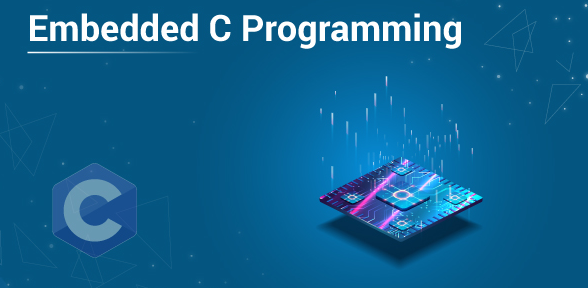
Embedded C -The Historical backdrop of C Programming
Starting points of C Programming
C writing computer programs was created in the mid 1970s by Dennis Ritchie at Ringer Labs. It was made as an upgrade to the B programming language to emotionally supportive network level programming. The language was intended to further develop effectiveness, offering low-level admittance to memory and furnishing direct association with equipment.
Reception and Development
The effortlessness and force of C made it a generally taken on language. In 1978, Brian Kernighan and Dennis Ritchie distributed “The C Programming Language,” setting its ubiquity. Throughout the long term, it turned into the establishment for working frameworks, including UNIX, and impacted numerous advanced dialects like C++, Java, and Python.
Why C Writing computer programs is Fundamental for Implanted Frameworks
Low-Level Equipment Cooperation
C permits engineers to straightforwardly get to and control memory, making it ideal for equipment level programming. Installed frameworks frequently require exact command over equipment parts, and C gives this ability actually.
Versatility
C projects are exceptionally versatile across different stages. When composed, the code can be effectively adjusted to various microcontrollers and processors, settling on it a go-to decision for implanted framework engineers.
Productivity
C is an incorporated language, guaranteeing quick execution. Its negligible runtime above makes it ideal for gadgets with restricted figuring assets.
Wide Help
C has been around for quite a long time, bringing about broad libraries, instruments, and local area support. This environment assists engineers with addressing difficulties and construct hearty inserted arrangements.
Key Highlights of C Programming in Implanted Frameworks
- Organized Programming
C backings an organized methodology, permitting engineers to break code into sensible capabilities. This improves lucidness and decreases investigating time. - Bitwise Activities
C offers digit level control, which is pivotal for assignments like setting setup registers or perusing sensor information in implanted frameworks. - Memory The executives
With pointers, engineers have some control over memory allotment and deallocation. Embedded C This is especially valuable in implanted frameworks, where memory is in many cases a basic asset. - Ongoing Handling
C empowers ongoing handling by permitting exact timing control, which is indispensable for applications like advanced mechanics and auto frameworks.
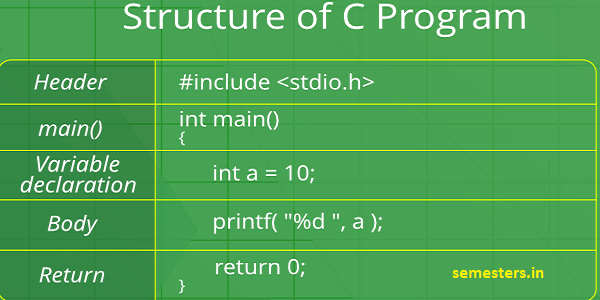
Embedded C uses of Programming in Implanted Frameworks
- Car Frameworks
C is utilized in car applications like motor control units, electronically monitored slowing mechanisms, and infotainment frameworks. Its dependability guarantees security basic capabilities work impeccably. - Buyer Gadgets
From clothes washers to shrewd televisions, C powers many implanted frameworks in family gadgets. It guarantees effective activity and consistent client connection. - IoT Gadgets
Web of Things (IoT) gadgets depend vigorously on implanted frameworks modified in C. It guarantees gadgets work with negligible inactivity and improved power use. - Modern Computerization
Implanted frameworks modified in C are essential to assembling and modern robotization, controlling cycles like transport lines and automated arms.
Benefits of Involving C for Inserted Frameworks
- Code Improvement
C takes into account adjusting code, guaranteeing ideal execution on equipment with restricted assets. - Investigating Backing
C gives admittance to troubleshooting apparatuses that rearrange investigating, which is fundamental in implanted frameworks improvement. - Continuous Activity
With its capacity to associate with equipment progressively, C is imperative for applications where timing is basic.
Difficulties of C in Implanted Frameworks
- Intricacy
While strong, C requires a precarious expectation to learn and adapt. Designers need to see low-level equipment and memory the executives. - Investigating Overheads
Troubleshooting in C can be testing, particularly while working with pointers and complex equipment associations. - Absence of Wellbeing Components
Dissimilar to present day dialects, C needs inherent wellbeing highlights like trash assortment, expanding the gamble of memory spills.
Embedded C programming has gone the distance as a strong, productive, and flexible language. Its capacity to give low-level equipment access, transportability, and productivity makes it irreplaceable in the realm of implanted frameworks. From auto answers for IoT gadgets, C keeps on assuming a urgent part in molding present day innovation..
Embedded C Programming Concepts and Syllabus
Embedded C Programming Ideas Prospectus
The following is an organized prospectus covering key and high level points in C programming. It is intended to take care of fledglings along with halfway students who need to fabricate areas of strength for an in C.
- Prologue to C Programming
History and advancement of C language
Elements of C programming
Uses of C programming
Figuring out compilers and IDEs (Coordinated Improvement Conditions) - Essentials of C Programming
Design of a C program
Composing and executing a basic C program
Information types and factors
Number, Float, Twofold, Character, Void
Constants and literals
Watchwords and identifiers - Info and Result in C
Utilizing printf() and scanf()
Working with getchar() and putchar()
Document I/O essentials (fopen, fclose, fprintf, fscanf) - Administrators in C
Math administrators
Social administrators
Consistent administrators
Bitwise administrators
Task and compound task administrators
Increase (++) and Decrement (- – ) administrators
Ternary administrator - Control Designs
Restrictive explanations
if, if-else, else-if stepping stool
switch-case proclamation
Circling explanations
for circle
while circle
do-while circle
Hop proclamations
break
proceed
goto - Capabilities in C
Definition and announcement of capabilities
Capability models
Passing contentions to capabilities (by esteem and by reference)
Return values from capabilities
Recursion
Inline capabilities - Clusters and Strings
Prologue to clusters
Single-layered exhibits
Complex clusters
String dealing with in C
String instatement and statement
Normal string capabilities (strlen, strcpy, strcmp, and so forth.) - Pointers in C
Nuts and bolts of pointers
Pointer math
Pointers and clusters
Pointers and capabilities
Invalid pointers
Dynamic memory allotment (malloc, calloc, realloc, free) - Designs and Associations
Characterizing and utilizing structures
Settled structures
Varieties of designs
Pointers to structures
Associations and their applications
Contrasts among designs and associations - Document Taking care of
Perusing and composing documents
Document activities (open, close, read, compose)
Arbitrary admittance to documents
Blunder taking care of during document tasks - Preprocessors in C
Macros and their utilization
Restrictive aggregation
- High level Themes
Specifications (enum)
Typedef and its applications
Bit control procedures
Order line contentions
Capacity classes in C
auto, static, extern, register - Information Designs in C (Discretionary)
Connected Records
Stacks and Lines
Trees and Diagrams (fundamental ideas)
Arranging and Looking through calculations - Troubleshooting and Advancement
Normal troubleshooting methods in C
Understanding division deficiencies and memory spills
Profiling and streamlining C projects - Involved Undertakings
Mini-computer program
Record encryption and unscrambling
Basic games (e.g., Spasm Tac-Toe)
Essential financial application
Ongoing framework recreation utilizing Embedded C
This schedule gives a thorough manual for dominating Embedded C programming, from fundamental ideas to cutting edge highlights. It is appropriate for scholastic learning or independent review.
Embedded Systems- Data Structures in C Programming

Embedded C Prologue to Information Designs in Implanted Frameworks
Information structures are the foundation of proficient programming, particularly in implanted frameworks. These designs coordinate, store, and oversee information productively to advance execution and asset use in obliged conditions.
Why Information Designs Are Fundamental in Implanted Frameworks
Implanted frameworks frequently work under severe equipment constraints. Appropriate information structures guarantee memory advancement, quicker execution, and consistent assignment the board. They make processes like information recovery and capacity direct and dependable.
Usually Utilized Information Designs in C for Implanted Frameworks
- Clusters
Clusters are basic and effective. They store various components of a similar kind in bordering memory.
Use Case in Implanted Frameworks:
Exhibits are utilized for buffering information continuously frameworks like sound handling or sensor information capacity.
- Connected Records
Connected records comprise of hubs that store information and a reference to the following hub.
Benefits: Dynamic memory distribution and effective addition or cancellation.
Use Case: Connected records are great for executing dynamic information lines in implanted frameworks.
- Stacks
Stacks follow the Toward the end In, First Out (LIFO) guideline.
Applications in Implanted Frameworks:
Utilized in capability calls, recursion, and overseeing restricted capacity in microcontrollers.
- Lines
Lines work on an Earliest in, earliest out (FIFO) premise.
Use Case:
Broadly utilized in task booking, message passing among cycles, and information buffering.
- Trees
Trees are various leveled structures comprising of hubs.
Parallel Inquiry Trees (BSTs): Regularly utilized for looking and arranging.
Use Case: Proficient for putting away progressive information in implanted firmware.
- Hash Tables
Hash tables permit quick information recovery utilizing keys.
Embedded C Use Case in Implanted Frameworks:
Ideal for putting away and recovering gadget arrangements or query tables progressively frameworks.
- Charts
Diagrams are an assortment of hubs associated by edges.
Use Case:
Network steering in implanted gadgets or reliance the board in task schedulers.
Key Tasks for Information Designs in Implanted Frameworks
- Inclusion and Cancellation
Proficient addition and cancellation processes are fundamental in implanted frameworks to oversee dynamic information without over-burdening assets. - Looking and Crossing
Implanted frameworks frequently require looking through information proficiently, for example, finding sensor values or arrangement subtleties. - Arranging Calculations
Arranging calculations like air pocket sort, combine sort, and fast sort streamline information association in implanted firmware.
Memory The executives in Implanted Frameworks
Memory is restricted in implanted frameworks. Information structures like connected records and dynamic exhibits are fundamental for memory proficiency. Utilizing dynamic memory assignment (malloc, calloc, and free) permits better asset utilization.
Picking the Right Information Construction for Installed Situation
Picking the proper information structure relies upon the application’s necessities. Factors include:
Memory restrictions
Speed of tasks
Kind of information (static or dynamic)
Instances of Genuine Applications
Round Cradles: Utilized in sound frameworks for constant information streaming.
Paired Trees: Productive for progressive information like gadget settings.
Challenges with Information Designs in Implanted Frameworks
Memory Imperatives:
Fixed-size memory requires proficient utilization of information structures.
Ongoing Execution:
Information structures should deal with assignments inside severe time requirements.
Intricacy:
Overseeing complex information structures like charts can be trying in restricted asset conditions.
Best Practices for Utilizing Information Designs in C for Implanted Frameworks
Limit Memory Impression:
Keep away from inordinate utilization of dynamic memory.
Advance Calculations:
Utilize lightweight calculations for information control.
Test Completely:
Guarantee the information structure performs well under ongoing circumstances.
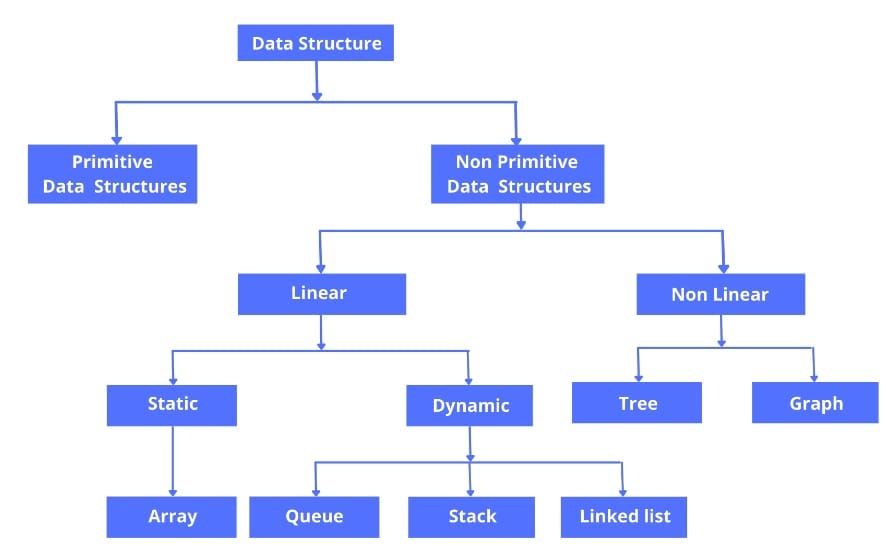
Embedded C Prologue to Information Designs
Information structures are crucial parts of software engineering and programming. They give a method for sorting out, store, and oversee information effectively. Whether for calculations or framework plan, information structures guarantee that activities like information recovery, addition, and cancellation are upgraded.
Center Ideas of Information Designs
- Definition
An information structure is a particular approach to sorting out and putting away information in a PC to be gotten to and changed effectively. - Classifications
Information structures are comprehensively separated into:
Direct Information Designs: Clusters, connected records, stacks, and lines.
Non-Direct Information Designs: Trees, charts, and hash tables.
- Significance
Information structures go about as the foundation of productive calculations. They diminish intricacy, streamline execution, and further develop code lucidity.
Kinds of Information Designs
- Exhibits
An exhibit is an assortment of components put away at coterminous memory areas.
Use: Putting away fixed-size information like characteristics of understudies or month to month deals information.
- Connected Records
A connected rundown comprises of hubs, where every hub contains information and a reference to the following hub.
Utilization: Dynamic information the board, for example, carrying out stacks and lines.
- Stacks
Stacks work on the Toward the end In, First Out (LIFO) guideline.
Utilization: Capability call the board, articulation assessment, and backtracking.
- Lines
Lines work on the Earliest in, earliest out (FIFO) standard.
Use: Cycle planning for working frameworks or overseeing client care tickets.
- Trees
Trees are various leveled information structures with hubs connected together.
Use: Addressing document frameworks, information bases, and dynamic models.
- Hash Tables
A hash table guides keys to values, empowering speedy information recovery.
Use: Putting away client data or information base ordering.
- Charts
Charts address connections between hubs utilizing edges.
Utilization: Organization plan, web-based entertainment associations, and reliance the executives.
Utilizations of Information Designs
- Calculations
Proficient calculations depend on the appropriate utilization of information structures for looking, arranging, and different activities. - Data set Administration
Data sets use structures like B-trees and hash tables to rapidly record and recover information. - Working Frameworks
Working frameworks use lines for task planning, connected records for overseeing memory, and stacks for capability calls. - Organizing
Diagrams are broadly utilized in systems administration for steering and addressing associations between gadgets. - Game Turn of events
Game motors influence trees for independent direction and exhibits for overseeing objects.
Picking the Right Information Design
While settling on an information structure, consider:
The sort of activity (inclusion, cancellation, crossing).
The size and dynamic nature of information.
Execution prerequisites like speed and memory use.
Instances of Purpose Cases
Exhibits are best for fixed-size information.
Trees are ideal for various leveled connections.
Hash tables succeed in quick queries.
Challenges in Utilizing Information Designs
Memory The board: Choosing structures that don’t surpass memory imperatives.
Intricacy: Carrying out cutting edge information structures like charts can be complicated.
Execution: Adjusting rate and asset utilization, particularly in asset restricted conditions.
End
Understanding information structures is crucial for proficient programming. Every information structure fills a remarkable need, and picking the right one guarantees better execution and asset the board. Dominance of these ideas engages engineers to configuration improved frameworks and settle complex problems effectively.
1. Introduction to Data Structures
- Definition: What are data structures?
- Importance of Data Structures in Programming
- Abstract Data Types (ADT)
- Operations on Data Structures: Insertion, deletion, traversal, search, etc.
- Time and Space Complexity: Big O Notation and its relevance.
2. Types of Data Structures
2.1 Linear Data Structures
- Arrays: Definition, types (static vs dynamic), operations, advantages, and disadvantages.
- Linked Lists: Types (singly, doubly, and circular), operations like insertion, deletion, searching, and traversal.
- Stacks: LIFO principle, implementation using arrays and linked lists, applications (e.g., expression evaluation, function calls).
- Queues: FIFO principle, types (simple, circular, and priority), operations, applications (e.g., process scheduling, printer queues).
2.2 Non-Linear Data Structures
- Trees: Types (binary tree, binary search tree, AVL tree, heap), tree traversals (pre-order, in-order, post-order), applications (e.g., decision trees, file structures).
- Graphs: Types (directed, undirected, weighted, unweighted), graph representations (adjacency matrix, adjacency list), graph traversals (DFS, BFS), applications (e.g., shortest path algorithms, network routing).
2.3 Hashing
- Hash Functions: Concept, hash table, collision resolution techniques (separate chaining, open addressing).
- Applications of Hash Tables: Fast lookups, hash maps, and dictionaries.
3. Advanced Data Structures
3.1 Heaps
- Binary Heap: Min-heap, max-heap, heap operations (insertion, deletion), applications (priority queues, heap sort).
3.2 Tries
- Definition: A special tree used for storing strings.
- Applications: Dictionary search, auto-completion, IP routing.
3.3 Disjoint Set
- Union-Find Data Structure: Basic operations (union, find), applications in dynamic connectivity problems, Kruskal’s algorithm for minimum spanning tree.
4. Algorithms Associated with Data Structures
- Sorting Algorithms: Bubble sort, merge sort, quicksort, heap sort, and their time complexities.
- Searching Algorithms: Linear search, binary search, hash-based search.
- Graph Algorithms: Dijkstra’s shortest path, Floyd-Warshall algorithm, Prim’s and Kruskal’s algorithm for minimum spanning tree.
5. Applications of Data Structures
- File Management: Use of B-trees and hash tables in file systems and databases.
- Operating Systems: Queues for process scheduling, stacks for managing function calls.
- Networking: Graphs for network design and routing algorithms.
- Compilers: Syntax trees, hash tables for symbol management.
- Game Development: Trees for decision-making, arrays and linked lists for object management.
6. Practical Implementation
- Programming Languages: Implementing data structures in languages like C, C++, Java, and Python.
- Memory Management: Understanding memory allocation and deallocation in various programming languages.
- Handling Complex Data: Multi-dimensional arrays, linked list with multiple pointers, etc.
7. Advanced Topics
- Self-Balancing Binary Search Trees: AVL trees, Red-Black trees.
- B-trees and B+ trees: Used in databases for efficient searching and insertion.
- Advanced Hashing Techniques: Perfect hashing, extendable hashing.
8. Evaluation and Assessment
- Practical Assignments: Implementing data structures and algorithms.
- Quizzes and Exams: Testing understanding of concepts, complexities, and application scenarios.
- Project: Design a real-world application using appropriate data structures (e.g., building a basic file management system or an online shopping cart).